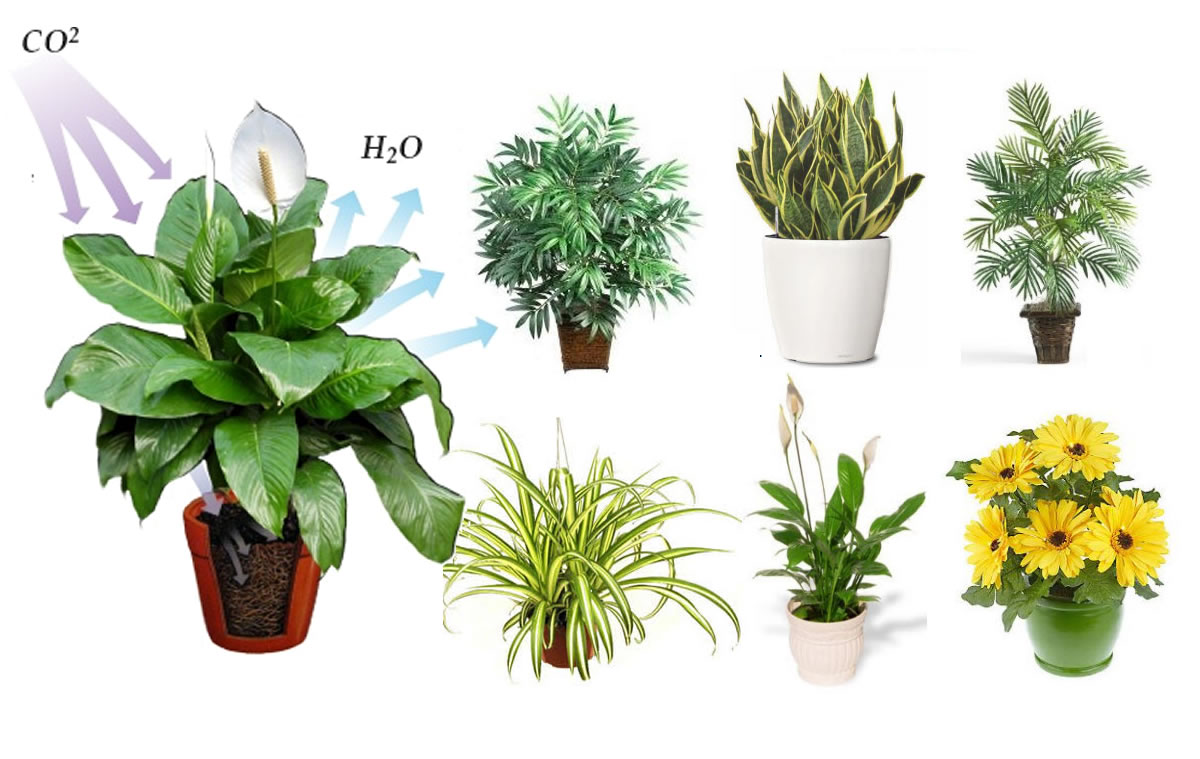 THE AIR
THE AIR
The gas mixture referred to as "air" has a fairly constant distribution in nature, in our apartment- and work rooms, however, often have quite different compositions.
Air is the source of the oxygen and carbon dioxide needed for living things to breathe, that all plants equipped with Leaf Green need. Under the influence of light, the green plant forms its building blocks from the inorganic substances carbon dioxide and water. This process is called photosynthesis. As we see, the interaction of several growth factors is necessary. However, all parts of the plant, including the roots, also breathe. One must therefore always ensure that houseplants have sufficient air supply in the root area. Too much soil moisture – for example due to standing moisture in pots or saucers – leads to a lack of oxygen and therefore inhibits or completely prevents root respiration. The result is yellowing or falling of the leaves and eventually the plant dies. By introducing a gravel- or broken layer on the bottom of the flowerpot when transplanting and keeping the
We take care of the drainage hole in the bottom of the pot, that excess water can drain away. We also make it easier for air to get into the root ball, when we loosen the crusted soil surface. In addition, the carbon dioxide excreted during root respiration can escape.
Plants kept indoors tend to get dusty on the leaves. The dust prevents light from entering the substance-forming cells, so that the plants cannot assimilate. For this reason you should hose down the indoor plants from time to time, put out in the rain in summer or clean the individual leaves with a soft sponge and stagnant water. This measure is particularly important in work rooms with severe air pollution caused by dust.
All houseplants, especially flowering plants and foliage plants with delicate foliage, are sensitive to drafts. It removes a lot of moisture from the tissues, causes sudden cooling and should therefore be carefully avoided. However, this does not rule it out, that we ensure sufficient fresh air supply through ventilation.
Air pollution from smoke- and poison gases (illuminating gas, which often occurs in kitchens and the plants are still in admixtures of 0,0001% harms), sometimes tobacco smoke, can lead to, that the plants are slowly dying. Rauch- and poison gas damage is noticeable through pale green discoloration of the leaves and brown spots between the leaf veins.
During the air in the great outdoors through dew, Rain and evaporation from water surfaces is repeatedly enriched with moisture, this is not the case in closed rooms. Dry air causes the plants to release more water and can lead to damage if there is a lack of water supply. The humidity conditions in centrally heated rooms are particularly unfavorable for plant growth. Few plant species, which, so to speak, "by nature" require only a low water vapor content of the air, also thrive in rooms with dry air. With all others you have to provide the necessary moist air, by water-filled, flat bowls placed or the plants in beautiful, sprayed over at least once with the help of an atomizer on warm days. For most of our indoor plants (also for us humans by the way!) is a relative humidity of 60 to 70 percent most beneficial. With plants, come from tropical areas with a warm, humid climate, such stopgap measures will not suffice, to keep them permanently as room decorations. These exotic treasures require a plant window that is closed off from the room air.
